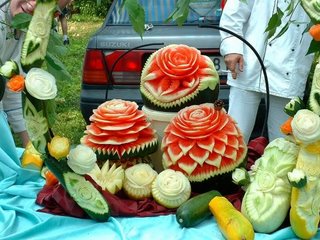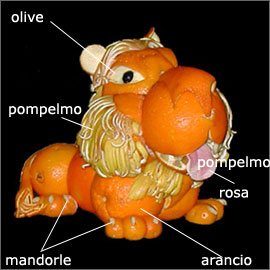Que se passe-t-il au moment de la mort ?
Explication du Vénérable Tich Thien Châu, moine vietnamien
(Publié dans BuddhaLine - 2 octobre 2002)
Les phénomènes psychophysiques qui nous constituent naissent et meurent perpétuellement, à chaque instant pendant toute la durée de cette vie. En d’autres termes, la dissolution et la disparition sans cesse répétée de chaque combinaison psycho -physique momentanée.
À propos de l'instantanéité de l'existence, Buddhagosa a écrit, dans le Visuddhimagga, VIII: "Au sens absolu, nous n'avons qu'un temps de vie très court. La vie ne dure que le temps d'un unique instant de conscience. Tout comme la roue d'un chariot, qu'il roule ou soit immobile, ne s'arrête jamais que sur un point de la jante. Ainsi, la vie d'un être ne dure qu'un unique instant de conscience. Dès que cesse cet instant, l'être cesse aussi."
La biologie nous informe aussi qu’en un an 98% des cellules de notre corps changent. Ainsi, la mort en tant que rupture des facultés vitales d’une forme d’existence n’est que l’interruption temporaire d’une forme, d’une apparence ; elle n’est pas l’annihilation complète d’un individu ; elle est, bien plutôt, la manifestation du passage immédiat à une autre existence. Seules les formes des organismes cessent de fonctionner, mais l’énergie, la soif d’existence inclue dans la force karmique, continue de se manifester dans une autre forme de vie. En conséquence, la loi de cause à effet opère sans interrompre les processus de vie.
L’individu est toujours responsable de ses actions et héritera de leurs résultats. En examinant la mort (la conception de la mort dans le Bouddhisme) à l’aide de ces points de doctrine, nous considérons de toutes façons la mort comme un phénomène aussi normal que la naissance. Sur ce sujet, voyons les explications du Bouddhisme concernant ce qui se passe au moment de la mort.
Généralement les gens sur le point de mourir étant physiquement faibles, ne peuvent contrôler ou diriger leurs pensées. Aussi, des impressions provoquées par des événements importants de leur vie présente ou de leurs existences passées, apparaissent activement dans leur esprit qui se trouve incapable de les rejeter.
Ceci constitue les trois sortes de pensées au moment de l’approche de la mort :
1. Le souvenir d’actions importantes, bonnes ou mauvaises, accomplies précédemment (karma)
2. Le symbole de ces actions (Kammanimitta), par exemple, le fusil avec lequel on a tué quelqu’un.
3. L’image de l’endroit où l’on doit renaître (gatini mitta), par exemple le lieu de souffrance extrême (naraka) pour les meurtriers, ou le lieu bienheureux (devaloka) pour les généreux.
Ces trois objets de pensée que l’on ne peut choisir consciemment apparaissent clairement dans l’esprit au moment de la mort. Ces pensées à l’approche de la mort constituent des actions près de la mort (maranasanna kamma) influençant et déterminant le caractère de l’existence à venir de la même façon que la dernière pensée précédant le sommeil peut devenir la première pensée au réveil.
De même, les actions les plus importantes d’une vie (garuka kamma), ainsi que les actions habituelles, bonnes ou mauvaises deviennent les pensées actives et prédominantes dans les dernières minutes. Si quelqu’une de ces actions est absente au moment de la mort, l’action cachée (katatta kamma) constitue la force qui produit la naissance. Il y a ainsi quatre catégories d’actions (Kamma) qui conditionnent l’apparition des pensées qui précèdent le mort. Après que ce processus de pensée soit apparu dans la conscience directrice (tadalambana) dont la fonction est d’enregistrer les impressions réelles, la pensée de la mort (cuticitta) advient. C’est la fin de cette existence.
Du raisonnement aux preuves: Que se passe-t-il après la mort ?
A ce propos, le Bouddha a exposé la "doctrine de la renaissance". Cette doctrine a son origine dans l’illumination du Bouddha et non dans aucune des croyances pré-bouddhistes avec lesquelles elle a souvent été, à tort, confondue.
D’après cette doctrine de la renaissance, la mort est une porte qui s’ouvre sur une autre forme de naissance. Les deux existences sont réunies par la conscience de renaissance (patisandhi-vinnana) qui est conditionnée par la pensée précédant la mort (maranasanna javanacitta) et qui réapparaît au moment de la conception, c’est à dire avec la formation d’une nouvelle vie dans la mère. Cette conscience est identifiée comme "l’être à naître" (gandhabha). Immédiatement après, elle disparaît dans le courant subconscient de la nouvelle vie (bhevangasota) qu’elle conditionne sans interruption.
C’est la conscience de renaissance qui détermine le caractère latent d’un individu. Il faut remarquer que le Bouddhisme ne dénie nullement l’hérédité parentale, mais insiste sur le fait que l’hérédité essentielle est la force karmique incluse dans le troisième facteur, qu’on appelle couramment "l’être à naître" (gandhabha), de la conscience de renaissance. De la mort à la renaissance, le courant de conscience est transmis sans l’intervention d’aucun intermédiaire (antarabhava).
De même, la conscience de renaissance ne transmigre jamais d’une existence passée à une existence ultérieure. Il peut être utile de comparer cela à des phénomènes tels que l’écho, la lumière d’une lampe, l’impression d’un sceau ou l’image dans un miroir. Les deux existences consécutives ne sont ni identiques ni différentes (Milindapanha p. 40).
Comme la conscience de renaissance est conditionnée par la force karmique, on peut renaître après la mort dans l’une ou l’autre des cinq possibilités suivantes :
1. le lieu de souffrance extrême
2. le règne animal
3. les esprits
4. l’humanité
5. les mondes célestes.
Il est bon de dire à ce propos que la doctrine de la renaissance qui est une théorie de la continuité de l’être après la mort, est différente de la doctrine de la réincarnation ou de la transmigration Hindoue ; car c’est en effet une doctrine séparée et tenant le milieu entre les deux extrêmes :
- la théorie de l’éternité (sassataditthi) qui admet l’existence d’un ego persistant ou d’une personnalité existant indépendamment de ses processus psychophysiques.
- la théorie de l’anihilation (uccedaditthi) qui, à l’opposé, admet l’existence d’un ego ou d’une personnalité qui s’identifie entièrement à un processus psycho-physique et, par conséquent, est annihilé par la mort.
La doctrine de la renaissance n’est pas un dogme qui doit être accepté d’avance, mais plutôt un principe qui peut être vérifié. Les 20 cas de renaissance recueillis et analysés par le Docteur Ian Stevenson Department of Neurology and Psychiatry School of Medicine, University of Virginia, et publiés sous le titre de "20 cases suggestive of reincarnation" en constituent une preuve.
 Photo: http://virtualdoug.typepad.com/
Photo: http://virtualdoug.typepad.com/
 Betel leaves and areca nuts play an important role in Vietnamese culture. There is a Vietnamese saying that "the betel begins the conversation", referring to the practice of people chewing betel in formal occasions or "to break the ice" in awkward situational conversations. The betel leaves and areca nuts are also used ceremonially in traditional Vietnamese weddings, where the groom offers the bride's parents betel leaves and areca nuts (among other things) in exchange for the bride. Betel leaves and areca nuts are such important symbols of love and marriage that the expression "matters of betel and areca" (chuyen trau cau) is synonymous with marriage.
Betel leaves and areca nuts play an important role in Vietnamese culture. There is a Vietnamese saying that "the betel begins the conversation", referring to the practice of people chewing betel in formal occasions or "to break the ice" in awkward situational conversations. The betel leaves and areca nuts are also used ceremonially in traditional Vietnamese weddings, where the groom offers the bride's parents betel leaves and areca nuts (among other things) in exchange for the bride. Betel leaves and areca nuts are such important symbols of love and marriage that the expression "matters of betel and areca" (chuyen trau cau) is synonymous with marriage.























